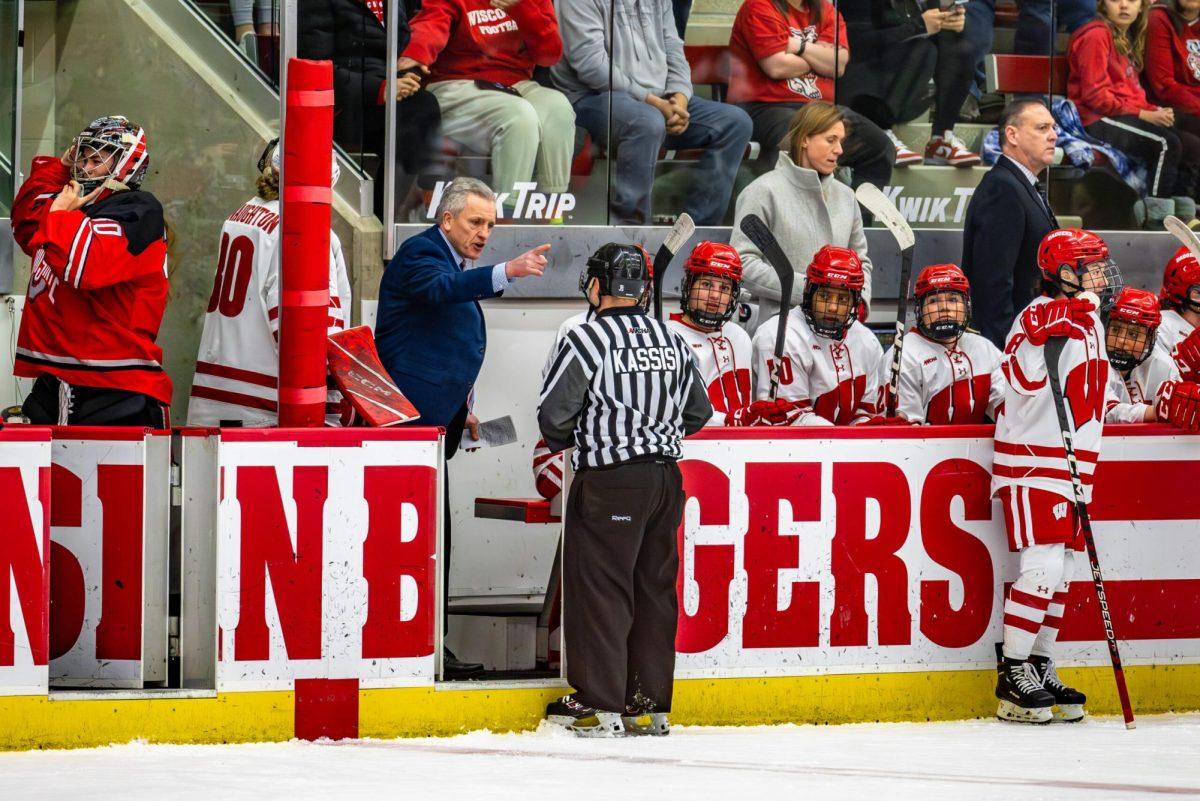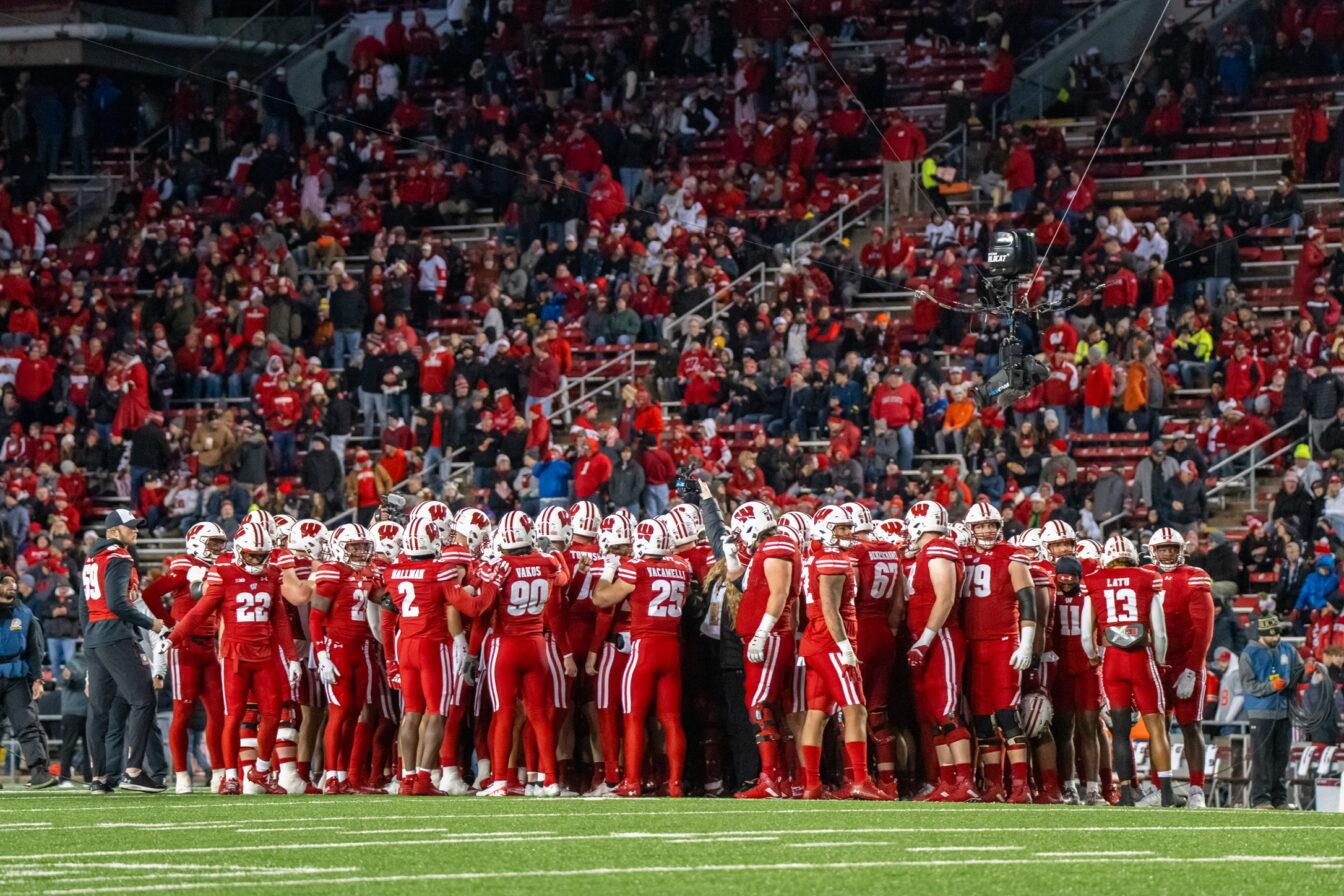Brian White, Wisconsin’s offensive coordinator, refuses to make excuses for his young team.
Even though Wisconsin’s offensive line boasts three first-year starters and a redshirt freshman starting at tailback, White won’t use the team’s inexperience to explain the Badgers’ weak red-zone performance last week against Penn State, when UW scored just two touchdowns in five trips inside the Nittany Lions’ 20-yard line.
“That’s a convenient theory,” White said. “We’re playing enough football where . . . I, I’m not going to buy into that theory. [Just] go out and execute.”
UW head coach Barry Alvarez agreed with White’s assessment, calling the Badgers’ miscues “matter[s] of execution.” Alvarez, however, stressed that his inexperienced herd still needed to adjust to the accelerated pace of red-zone play.
“They have to understand, you need more concentration in the red zone,” Alvarez said during his weekly press conference. “Things happen faster, people put more pressure on you, send more people. It’s condensed; they’re crowding the secondary. It’s something that obviously we’re going to have to emphasize a little bit more.”
Not that Wisconsin’s youngsters have played horribly in the red zone this season. In four games and 13 trips into their opponents’ red zones, the Badgers have scored seven touchdowns, attempted six field goals (making five) and, perhaps most impressively, committed zero turnovers. Out of this season’s possible 78 red-zone points, Wisconsin has scored 57 points, and until Mike Allen missed a 37-yard field goal last week, the Badgers had scored points in every red-zone visit.
Despite those statistics, though, White’s squad still hasn’t satisfied him.
“You’d like more touchdowns,” White said. “You’d like to be around 80 percent touchdowns, [or] at least 75 percent touchdown-to-field goal ratio, in the actual red zone.”
One of the causes behind Wisconsin’s red-zone struggles has been Anthony Davis’ inability to score touchdowns. Davis leads America with 614 rushing yards, yet the freshman’s last, and only, touchdown came four weeks ago, on a 69-yard third-quarter scamper at Oregon.
To be fair, Davis has carried the ball on only 11 of the Badgers’ 25 red-zone runs. However, Davis has averaged 6.8 yards on carries outside the red zone, but he has only gained slightly more than two yards per carry inside the red zone. In fact, on six of Davis’ 10 red-zone rushes, he has been tackled behind or at the line of scrimmage.
White traces Davis’ ineffectiveness inside the 20 to fatigue that results from Davis’ extensive involvement during the Badgers’ longer drives. White is right: Davis’ worst red-zone performances in each game have come after drives of 11 plays, against Oregon; 12 plays, against Fresno State; and 15 plays, against Penn State (Davis had no red-zone carries against Virginia).
Surprisingly, second-string quarterback Jim Sorgi, who started against Oregon and Fresno State, has been the Badgers’ most effective red-zone performer, both in running and in passing. In six red-zone drives, Sorgi has passed for two touchdowns and run for two touchdowns, and he has accounted for 39 of UW’s 97 red-zone yards.
Incidentally, Sorgi also leads the team in rushing touchdowns with two, and in total touchdowns, where he has scored or assisted in seven of the Badgers’ 11 touchdowns. Despite Sorgi’s effectiveness against Oregon and Fresno State, however, White re-ordained Brooks Bollinger as the starter as soon as Bollinger’s liver healed from an injury he sustained in UW’s first game, against Virginia.
In order to stimulate Wisconsin’s red-zone offense, White should incorporate more passing plays. Despite gaining only 2.3 yards per red-zone rush, the Badgers have run the ball almost triple as many times as they’ve passed in the red-zone. Though several of those plays have been quarterback scrambles, UW’s red-zone rushing offense has produced few yards and only one first down, although it has scored four of Wisconsin’s seven red-zone touchdowns.
By contrast, the Badgers have averaged more than eight yards per red-zone pass completion. They’ve also thrown three touchdowns from the red zone.
Additionally, Wisconsin’s next three Big Ten opponents ? Indiana, Ohio State and Illinois ? rank 99th, 67th and 82nd in America in passing yards allowed per game. Against the run, those teams rank 65th, 23rd and 57th, respectively, in yards allowed per game. The Badgers may want to run more passing plays until they reach their opponent’s 5-yard line, where they’ll bulldoze the defense with running plays.
However, White decides to operate Wisconsin’s red-zone offense in the future, UW definitely needs to gain more than its current average of 2.9 yards per red-zone play. In fact, White may have inadvertently stumbled upon a new motto for his red-zone unit. Indeed, as White said Tuesday, the Badgers would do well to just go out and execute.













